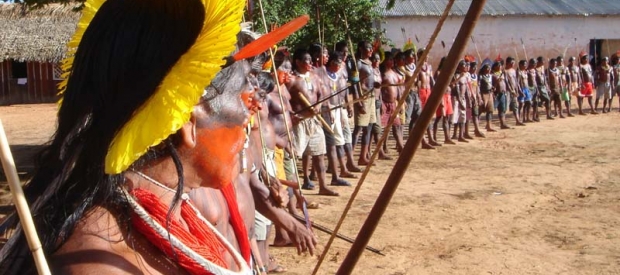Belo Monte Dam
The Brazilian government is currently constructing what would be the world’s third-largest hydroelectric project on one of the Amazon’s major tributaries, the Xingu River. The Belo Monte Dam would divert the flow of the Xingu, devastate an extensive area of the Brazilian rainforest, displace over 20,000 people, and threaten the survival of indigenous tribes that depend on the river. (see map)
The most controversial dam project facing Brazil today, Belo Monte is a struggle about the future of Amazônia. The Brazilian government has plans to build more than 60 large dams in the Amazon Basin over the next 20 years. Many Brazilians believe that if Belo Monte is approved, it will represent a carte blanche for the destruction of all the magnificent rivers of the Amazon - next the Tapajós, the Teles Pires, then the Araguaia-Tocantins, and so on. The Amazon will become an endless series of lifeless reservoirs, its life drained away by giant walls of concrete and steel.
The government says the project will cost more than US$13 billion, but industry analysts say that due to the difficulties in building a project of this size in the Amazon, its cost could easily exceed US$18 billion. While the project will have an installed capacity of 11,233 MW, the dam would be highly inefficient, generating as little as 1000 MW during the 3-4 month low water season.
The project’s extremely high cost and the river’s large seasonal variations in flow have led many to believe that after completing Belo Monte, Brazil will build other dams upstream with greater storage capacity to guarantee there will be enough water for Belo Monte to generate electricity year-round.
What’s the true cost of Belo Monte Dam? The answer is that no one knows yet. What’s clear is that Belo Monte will be the one of the largest, most devastating infrastructure projects ever to be built in the Amazon.
International Rivers is working with affected communities, Kayapó and other indigenous groups, lawmakers, and environmental and human rights groups to protect the Xingu River Basin from large dams and to promote alternatives to meeting Brazil's energy needs.
- Learn about Belo Monte using Google Earth
- Read our latest fact sheet on the Belo Monte Dam Project.
- Download our investor risk report on the Belo Monte Dam Project.
- See all Amazon Campaign Blog Posts
- Heart of Brazil Expedition, photo gallery and blog on the Xingu by Sue and Patrick Cunningham
- Watch an awesome film about the Belo Monte Dam by Cultures of Resistence.
- Visit our interactive Dams in Amazonia database to see planned dams for the Amazon Basin
- Read the book: Tenotã-Mõ: Alerts regarding the consequences of hydroelectric projects planned for the Xingu River (2005)








